A.R. Simmons's Blog: Musings and Mutterings, page 6
February 27, 2019
The Joys of Slow Reading [A Personal View]
Neither of my parents finished high school, yet both were avid readers, and they passed along the love of reading to me. They did this both by example, by reading aloud, and by providing a family library of books suitable for us children. They also subscribed to book clubs and several magazines along with a monthly publication which I now realize shaped my taste for learning and what I like to call "story-involvement." That was The Reader's Digest.
From news-related articles to patriotic stories to inspirational stories to regular features like "It Pays to Increase Your Word Power," "Quotable Quotes," and "Humor in Uniform," each volume was a lesson in cultural literacy and world events. I read every word.
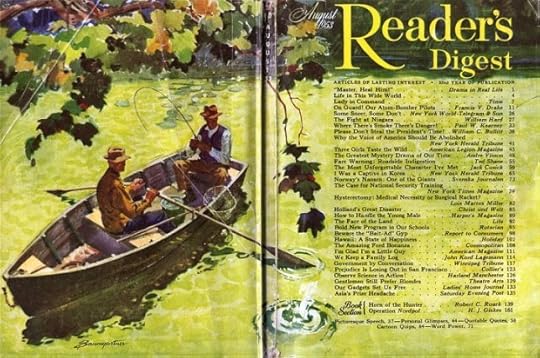
One article I remember in particular concerned the joy to be had from reading slowly. (This was at a time when the rage was speed reading.) Being taught at a time when phonics was not the norm, I became (and am) a sight reader, one of the drawbacks of which is reading what one thinks one sees rather than actually taking note of each word and punctuation mark. I also listen to what I read, which adds to my enjoyment of dialog and good narration.

The writer-reader relationship is a dynamic one. The writer tries to communicate his thoughts using his vocabulary and style. He works hard so that the reader will not have to. He employs all the tools at his disposal, including all parts of speech (including adverbs) as well as all punctuation marks (including em-dashes and ellipses). He also may employ a judicious amount of italics.
It makes a difference whether a comma, an ellipse, or an em-dash is used in a sentence. They read differently, and if read aloud , they convey different meanings. A well-written account has nuance that a speedy reading may overlook. The author succeeds in conveying his full meaning when the reader correctly interprets the a passage. Slow reading with attention to detail takes one into the passage and allows the author to convey his thoughts. For the reader, it is like appreciating a new world by looking through a powerful telescope.
[more later]

From news-related articles to patriotic stories to inspirational stories to regular features like "It Pays to Increase Your Word Power," "Quotable Quotes," and "Humor in Uniform," each volume was a lesson in cultural literacy and world events. I read every word.

One article I remember in particular concerned the joy to be had from reading slowly. (This was at a time when the rage was speed reading.) Being taught at a time when phonics was not the norm, I became (and am) a sight reader, one of the drawbacks of which is reading what one thinks one sees rather than actually taking note of each word and punctuation mark. I also listen to what I read, which adds to my enjoyment of dialog and good narration.

The writer-reader relationship is a dynamic one. The writer tries to communicate his thoughts using his vocabulary and style. He works hard so that the reader will not have to. He employs all the tools at his disposal, including all parts of speech (including adverbs) as well as all punctuation marks (including em-dashes and ellipses). He also may employ a judicious amount of italics.
It makes a difference whether a comma, an ellipse, or an em-dash is used in a sentence. They read differently, and if read aloud , they convey different meanings. A well-written account has nuance that a speedy reading may overlook. The author succeeds in conveying his full meaning when the reader correctly interprets the a passage. Slow reading with attention to detail takes one into the passage and allows the author to convey his thoughts. For the reader, it is like appreciating a new world by looking through a powerful telescope.
[more later]

Published on February 27, 2019 14:22
•
Tags:
imagery, parts-of-speech, punctuation, reading, vocabulary, writing
February 16, 2019
The Blue Creek Series: Genre and Graphic Rating

My Genre
I write Suspense. Some of the stories are Mysteries. Some are Crime novels. Some are Psychological Thrillers. I even have Romance elements. (Did I really just admit that?) Well, I'm a bit of a romantic, so that's that. What all the stories have is suspenseful climax scenes, often with hell's-a-poppin' action.

While we're going on about genre, let me tell you about what you are in for. Bonne Femme is a psychological thriller with a strong but subdued romance tone. Cold Tears is a mystery that is also a tale of redemption. Canaan Camp is a straight-out crime thriller story. Secret Song is a mystery. The King Snake is also a mystery, but also a suspense story. Call Her Sabine is a mystery/suspense story written from outside and inside the mystery. Devilry is a straight-forward investigative mystery. Road Shrines is a serial killer mystery. Cold Fury is another investigative mystery. The Daughter is an investigative mystery with a courtroom ending (and a final twist). Journey Man is both a serial killer mystery and a suspense story with a horrific ending. Devil's Run has Richard, Ron, and Kit racing to find a serial arsonist as something truly evin burns through Hawthorn County. And The Playpretty is a kidnapping mystery involving a poor, but bright girl trying to rise above her poverty and family reputation.
Truth in Advertising
I have been honest in classifying each book's genre. Now comes a warning: do not expect straight linear plots. Nor should you expect bare narration of events. These characters have a setting. They have lives and relationships. Other things go on while the mystery/suspense is playing itself out. Some of the books are long (over 100,000 words). So what? Electronic publishing need not worry over pounds of paper and barrels of ink. And the reader? Does he really want a good story to be over quickly?

Along with the current case that Richard is working on, the Carters have lives. They have little and big dramas to work through as the main story proceeds. When something happens in a story, it may be Kafka's gun, a red herring, or simply a slice of life. So be it. The series must be told as well as the current story. After all, our lives have many chapters. And like ours, some of the Carters' chapters are funny, some tragic, some magic.
A reviewer complained that one book had too many minor characters for her taste. Well, I'm not going to argue with her. After all, she was good enough to read my book and review it. And in the immortal words of Doctor Hook, "Some folks like ham hocks, and some folks like pork chops, and some folks like vegetable soup." All I can say is that each character is there for a purpose, and they are distinct enough to keep straight.
A Note Concerning Language, Violence, and Sex
These stories are adult themed, and are meant for adult readers. I studiously avoid explicit sex scenes and graphic violence. I also limit the profane language to that necessary for realistic dialog. You may be able to handle rougher stuff than this, but I can't. (My mother might read it.) Seriously, I consider extreme profanity and overly graphic depiction as crutches. Surely the reader has an imagination sufficient to "get the picture." Trust me. You will find the action sufficient and the dialog descriptive enough to make you believe the characters.
Published on February 16, 2019 08:35
•
Tags:
adult-themes, clean-reads, explicit-sex, extreme-profanity, genre, good-dialog, graphic-violence
February 8, 2019
The Place For Small Talk

Is there a place for small talk in your novel?
I think there is.
Yes, I know “brevity is the soul of wit.” We should pare down our prose and dialog to the bare minimum for clarity and to maintain the pace, right? After all, readers live busy lives and can’t be expected to live a book too—not when they can race through it to get to the climax.
Really?
I think not. Life has flavor. So should a story.
My advice is to forget all the rules you have read about dialog while you are writing. Give your characters a personality, and then let them speak. There are several reasons for this, the chiefest being that characters are best defined by their actions and speech patterns. One character is flippant and irreverent, another stiffly proper, and a third timid. Their speech and what they are thinking not only round them out, it also makes them flesh and blood instead of constructs. It also helps convey the proper POV. The reader will know who is talking without our adding a plethora of “saids.”
By the way, if you do this, you will find it much easier to conceive a new scene because one or more of your characters can make you see what is going on. After all, they are on the scene.
Published on February 08, 2019 13:17
•
Tags:
characters, dialog, small-talk, writing
February 5, 2019
Book Signing and Author Fair
Come to the Poplar Bluff Public Library to chat and browse. There will be several local writers there.
My paperbacks will be on sale at one cent over list price.
A limited number of BONNE FEMME paperback proof copies will be given away on a first come basis.
We will have the first 5 books in the series and feature DEVIL'S RUN All 13 books will be available to browse.
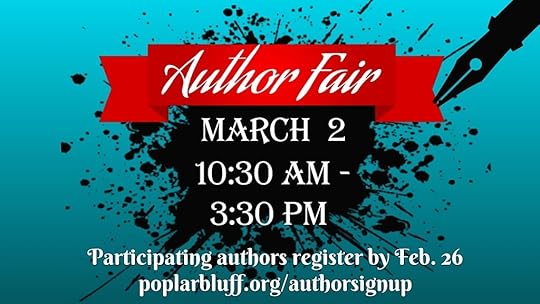
Devil's Run
Bonne Femme
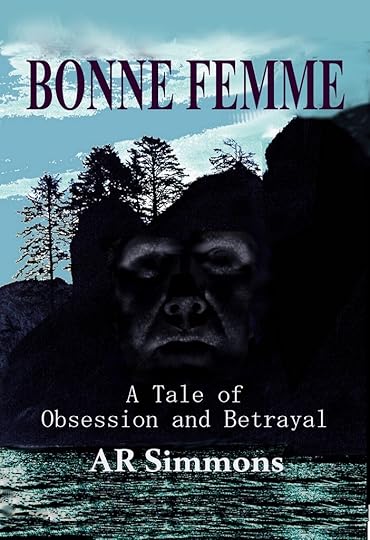
My paperbacks will be on sale at one cent over list price.
A limited number of BONNE FEMME paperback proof copies will be given away on a first come basis.
We will have the first 5 books in the series and feature DEVIL'S RUN All 13 books will be available to browse.

Devil's Run
Bonne Femme

Published on February 05, 2019 06:05
•
Tags:
book-fair, book-signing, mystery, paperback, suspense
January 9, 2019
Richard Carter series, Latest Releases, Giveaways, Updates

HEAR YE! HEAR YE!
The Giveaway of JOURNEY MAN is complete. I hope those of you who won a copy will enjoy it.
I especially enjoyed the debut of Deputy Kit Kittredge (Don't call her "Cicely," and certainly not "Sissy.")
THANKS TO ALL PARTICIPANTS
I also hope you had a nice Valentine's Day.
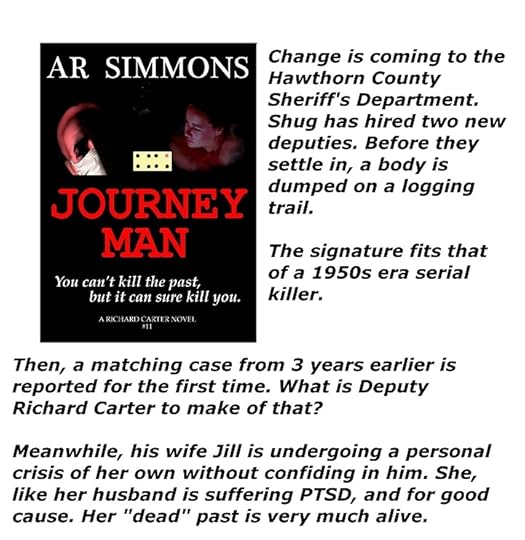
This updatable blog post will consist of updates on current Richard Carter/Blue Creek novels, including new novels, e-book giveaways and promotions, and new paperback releases
(We now have all 13 in hard copy).
Although we are offering them at the lowest price possible, e-books are by far your best buys at $1.99
Still, many readers want the book-in-the-hand experience, which is why we are going to the trouble.
The price $9.99
THE LATEST PAPERBACK RELEASE:

Journey Man
Bonne Femme
Devil's Run
Amazon Author Page
https://www.amazon.com/-/e/B00DWAU8T8
December 27, 2018
What Kind of Reader Are You?
Are you an observer? Or are you a participant.
Do you view a story? Or do you live it?
It came as a shock to me when a friend, who teaches college English and literature, said that she is acutely cognizant of style when reading.
"What?" I said. "How do you lose yourself in the story when you do that?"
Her answer was that she doesn't lose herself in the story.
It more than boggled my mind; it offended my sense of what successful story-telling is. I always identify with a character, and live a story rather than just follow it. As far as style is concerned, I think that if a reader notices the style while reading, the author has failed. The author, it seems to me (and I've always assumed), must be like the Wizard of Oz: absolutely invisible behind that curtain.
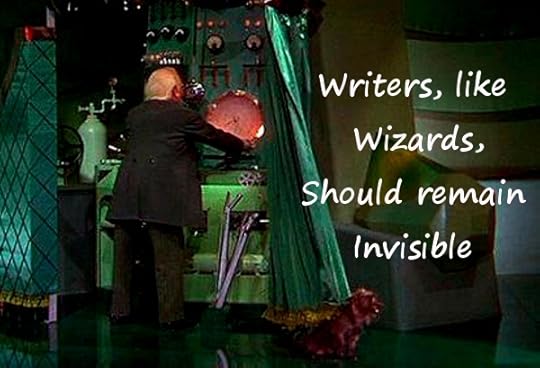
Anything—and I mean anything that takes the reader out of the story, whether it is a typo, an odd word, a hole in the plot, or even attention-grabbing style, destroys the illusion. It breaks the spell. And if the reader isn't spellbound, the writer has failed to deliver on what he has promised.
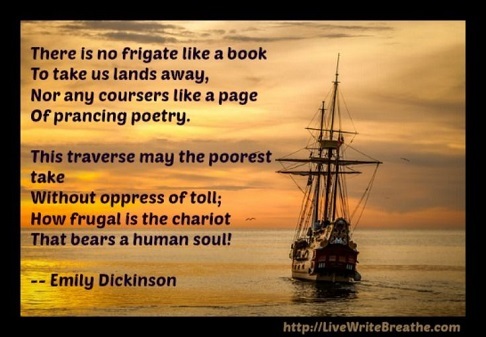
As Emily Dickinson wrote:
"There is no frigate like a book."
One must sign on and stay the course in order to savor the world tour for which he has paid passage.
What sort of reader are you?
Do you view a story? Or do you live it?
It came as a shock to me when a friend, who teaches college English and literature, said that she is acutely cognizant of style when reading.
"What?" I said. "How do you lose yourself in the story when you do that?"
Her answer was that she doesn't lose herself in the story.
It more than boggled my mind; it offended my sense of what successful story-telling is. I always identify with a character, and live a story rather than just follow it. As far as style is concerned, I think that if a reader notices the style while reading, the author has failed. The author, it seems to me (and I've always assumed), must be like the Wizard of Oz: absolutely invisible behind that curtain.

Anything—and I mean anything that takes the reader out of the story, whether it is a typo, an odd word, a hole in the plot, or even attention-grabbing style, destroys the illusion. It breaks the spell. And if the reader isn't spellbound, the writer has failed to deliver on what he has promised.

As Emily Dickinson wrote:
"There is no frigate like a book."
One must sign on and stay the course in order to savor the world tour for which he has paid passage.
What sort of reader are you?
Published on December 27, 2018 13:19
•
Tags:
reader, reading, storytelling, style
December 20, 2018
Notice: New Release
The Playpretty is available Kindle format. Richard Carter tackles a complicated kidnapping that leads to multiple homicides.
Here's the cover. Below it the blurb.

The Playpretty
Young lovers are missing. Only their overturned canoe and hastily abandoned picnic site are left as clues. A three AM call summons Richard to the sheriff’s department. A frantic girl, college freshman, Taylor Glass, says that she and her boyfriend Austen Kassinger were attacked on the creek by two men wearing ski masks.
Austen, the son of what passes for gentry in rural Hawthorn County, is missing. Taylor says that he fought the attackers and made her run away. She tells of running and hiding on the creek all afternoon and then walking through the woods after dark until she came to a farmhouse.
Austen’s father doesn’t believe a word of it. He sees her as a scheming “playpretty,” the kind of woman a respectable man might use as a cheap toy, but never consider marrying. Whatever has happened to his son, he is sure that Taylor is involved in it.
In the early morning the next day a brick with a Ziploc bag attached shatters the window of a parked car in town. Inside is Austen’s driver’s license with his bloody fingerprint, the first of several cryptic messages from the boy’s abductors. Kidnapping is a virtual a murder threat, but a deeper game is being played, one that leads to mayhem and multiple homicides.
The Playpretty
Other books featuring Deputy Cicely "Kit" Kittredge:
Journey Man
Devil's Run
Here's the cover. Below it the blurb.

The Playpretty
Young lovers are missing. Only their overturned canoe and hastily abandoned picnic site are left as clues. A three AM call summons Richard to the sheriff’s department. A frantic girl, college freshman, Taylor Glass, says that she and her boyfriend Austen Kassinger were attacked on the creek by two men wearing ski masks.
Austen, the son of what passes for gentry in rural Hawthorn County, is missing. Taylor says that he fought the attackers and made her run away. She tells of running and hiding on the creek all afternoon and then walking through the woods after dark until she came to a farmhouse.
Austen’s father doesn’t believe a word of it. He sees her as a scheming “playpretty,” the kind of woman a respectable man might use as a cheap toy, but never consider marrying. Whatever has happened to his son, he is sure that Taylor is involved in it.
In the early morning the next day a brick with a Ziploc bag attached shatters the window of a parked car in town. Inside is Austen’s driver’s license with his bloody fingerprint, the first of several cryptic messages from the boy’s abductors. Kidnapping is a virtual a murder threat, but a deeper game is being played, one that leads to mayhem and multiple homicides.
The Playpretty
Other books featuring Deputy Cicely "Kit" Kittredge:
Journey Man
Devil's Run
Published on December 20, 2018 05:16
•
Tags:
abduction, blurb, cover, female-detective, kidnapping, published, release
December 3, 2018
The Detective Genre # 12
The intellectual hard-boiled detective. LEW ARCHER.
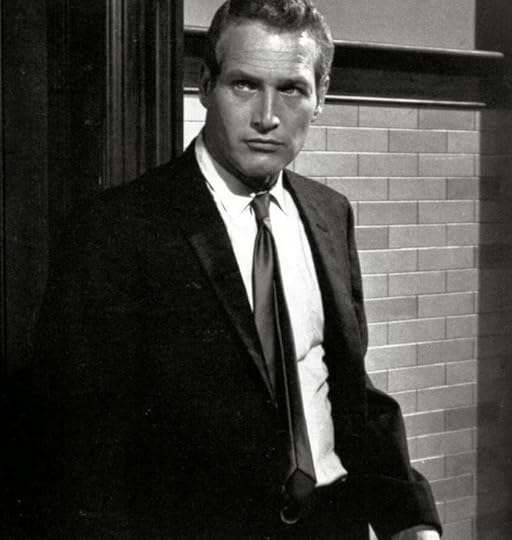
Ross Macdonald polished and refined the sub-genre of the world-weary P.I. Lew Archer first appeared as an investigator much like Chandler's Philip Marlowe, after whom Macdonald patterned him. Archer, however, grew, becoming more complex. He changed with the times (as all of us do until we begin to fear change.)
Here is a cover of his debut as a P.I. It could be a paperback cover for a Mickey Spillane novel, couldn't it?
That's marketing though. Lew Archer is not Mike Hammer.
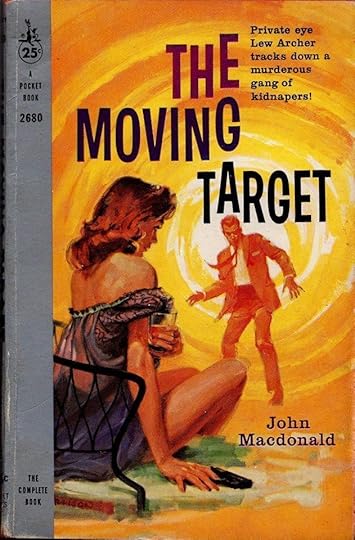
Lew Archer was patterned (at first) on Raymond Chandler’s Philip Marlowe. Consider him a hard-boiled detective of the 1950s. Like Marlowe, he plies his trade in Southern California. Archer grows and changes through the fifties, sixties, and seventies, aging and adapting as we all do, and by doing so, he is more real and relatable than the stock character would be. Archer is anything but static. The world moves on, it evolves, and so does Archer—and by extension, his world. If he didn’t he would not be nearly so interesting. He is true to his time.
If you want a good idea of Lew Archer, take Sam Spade or Philip Marlowe, cut them loose from their time and then let them grow and respond to the changes that occurred from the fifties, the turbulent sixties, and the seventies. One could use this formula to expand that to today, and well imagine Lew Archer walking among us. The wisecracks would be appropriate, and his thoughts as perceptive. What Lew Archer does is fit the time. Macdonald doesn’t create a world for us to visit, as Hammett and Chandler do, he reveals his characters in the real world that exists at the time that, the one we live in and recognize.

Also, more so than in the prototypical hard-boiled detective genre, Macdonald gives us a more philosophical and deep-thinking hero. The Lew Archer novels are “hard-boiled” and at times noir. However, the tension and tenor of the stories is psychological. The result is a very accomplished sleuth who is real flesh and blood. He reflects upon the nature of man and reveals his thoughts (and judgments) as sort of a personal social commentary on the time that serves as the setting for the evolving series.
Macdonald gives us a uniquely entertaining and wholly believable master sleuth. With Lew Archer, the hard-boiled genre reaches its zenith.
Ross Macdonald
The Drowning Pool is another of the early Lew Archer novels. It was written in 1959 wrapping up Macdonald's very productive first decade.
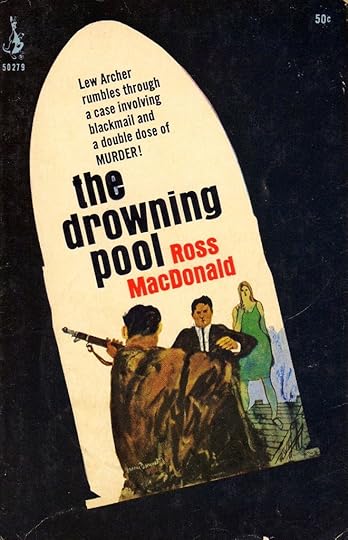
The Blue Hammer was the last of the series. It was written in 1976.
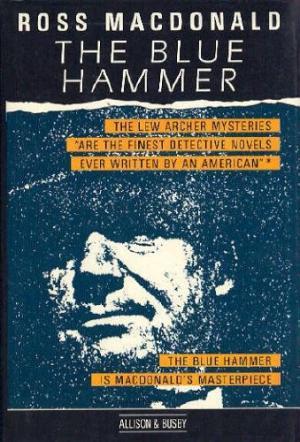
I recommend the following Lew Archer novels for a full taste of Macdonald's remarkable story-telling and his wonderful style.
Just go to these Amazon sites and read the blurbs.
The Moving Target
The Drowning Pool
The Blue Hammer

Ross Macdonald polished and refined the sub-genre of the world-weary P.I. Lew Archer first appeared as an investigator much like Chandler's Philip Marlowe, after whom Macdonald patterned him. Archer, however, grew, becoming more complex. He changed with the times (as all of us do until we begin to fear change.)
Here is a cover of his debut as a P.I. It could be a paperback cover for a Mickey Spillane novel, couldn't it?
That's marketing though. Lew Archer is not Mike Hammer.

Lew Archer was patterned (at first) on Raymond Chandler’s Philip Marlowe. Consider him a hard-boiled detective of the 1950s. Like Marlowe, he plies his trade in Southern California. Archer grows and changes through the fifties, sixties, and seventies, aging and adapting as we all do, and by doing so, he is more real and relatable than the stock character would be. Archer is anything but static. The world moves on, it evolves, and so does Archer—and by extension, his world. If he didn’t he would not be nearly so interesting. He is true to his time.
If you want a good idea of Lew Archer, take Sam Spade or Philip Marlowe, cut them loose from their time and then let them grow and respond to the changes that occurred from the fifties, the turbulent sixties, and the seventies. One could use this formula to expand that to today, and well imagine Lew Archer walking among us. The wisecracks would be appropriate, and his thoughts as perceptive. What Lew Archer does is fit the time. Macdonald doesn’t create a world for us to visit, as Hammett and Chandler do, he reveals his characters in the real world that exists at the time that, the one we live in and recognize.

Also, more so than in the prototypical hard-boiled detective genre, Macdonald gives us a more philosophical and deep-thinking hero. The Lew Archer novels are “hard-boiled” and at times noir. However, the tension and tenor of the stories is psychological. The result is a very accomplished sleuth who is real flesh and blood. He reflects upon the nature of man and reveals his thoughts (and judgments) as sort of a personal social commentary on the time that serves as the setting for the evolving series.
Macdonald gives us a uniquely entertaining and wholly believable master sleuth. With Lew Archer, the hard-boiled genre reaches its zenith.
Ross Macdonald
The Drowning Pool is another of the early Lew Archer novels. It was written in 1959 wrapping up Macdonald's very productive first decade.

The Blue Hammer was the last of the series. It was written in 1976.

I recommend the following Lew Archer novels for a full taste of Macdonald's remarkable story-telling and his wonderful style.
Just go to these Amazon sites and read the blurbs.
The Moving Target
The Drowning Pool
The Blue Hammer
Published on December 03, 2018 02:55
•
Tags:
detective, legendary-detectives, mystery, noir, private-eye, sleuth
August 18, 2018
The Detective Genre, # 11
PHILIP MARLOWE
Raymond Chandler's Noir Sleuth
Below is my favorite portrayer of Marlowe, Robert Mitchum.

Philip Marlowe, the prototypical, but not the original “hard-boiled detective.” Sam Spade, with whom he shares many traits preceded him in the 1920’s. Marlowe first walked the dark streets of noir fiction in 1939 in THE BIG SLEEP.
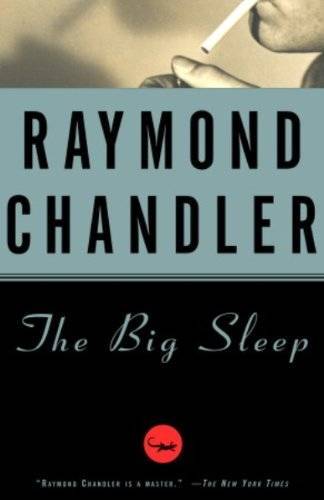
PHILIP MARLOWE
Marlowe is a man’s man, given to drink, possessed of a flippant wit, and not particularly observant of the niceties of society. He is tough both physically and mentally. At times he is cynical due to the things he has seen, done, and endured. But Marlow can be introspective and brooding. He tends to take the bumps and bruises philosophically.
He is not a one-dimensional character. True, he wisecracks his way through life and resorts to violence, but not gratuitously. Though not afraid of a fight, he doesn’t relish them. He reads poetry and plays chess, perhaps making him the gritty streets of detective fiction’s “Renaissance man.”
Although not always observant of the law and social convention, he is a profoundly moral man.
His method is to roll up his sleeves, immerse himself in the milieu of the back alleys, dark streets, and roil of the plot’s contestants until he finds his way through to the not-always-satisfying truth. Marlowe is the quintessential “noir sleuth,” an amalgam of Bulldog Drummond and perhaps Columbo, albeit with a decent suit.
Raymond Chandler's Noir Sleuth
Below is my favorite portrayer of Marlowe, Robert Mitchum.

Philip Marlowe, the prototypical, but not the original “hard-boiled detective.” Sam Spade, with whom he shares many traits preceded him in the 1920’s. Marlowe first walked the dark streets of noir fiction in 1939 in THE BIG SLEEP.

PHILIP MARLOWE
Marlowe is a man’s man, given to drink, possessed of a flippant wit, and not particularly observant of the niceties of society. He is tough both physically and mentally. At times he is cynical due to the things he has seen, done, and endured. But Marlow can be introspective and brooding. He tends to take the bumps and bruises philosophically.
He is not a one-dimensional character. True, he wisecracks his way through life and resorts to violence, but not gratuitously. Though not afraid of a fight, he doesn’t relish them. He reads poetry and plays chess, perhaps making him the gritty streets of detective fiction’s “Renaissance man.”
Although not always observant of the law and social convention, he is a profoundly moral man.
His method is to roll up his sleeves, immerse himself in the milieu of the back alleys, dark streets, and roil of the plot’s contestants until he finds his way through to the not-always-satisfying truth. Marlowe is the quintessential “noir sleuth,” an amalgam of Bulldog Drummond and perhaps Columbo, albeit with a decent suit.
Published on August 18, 2018 15:05
•
Tags:
detective, legendary-detectives, mystery, noir, private-eye, sleuth
August 7, 2018
The Importance of "The Precious"
Did you ever begin watching a movie or reading a book only to suddenly realize that you didn’t like any of the characters and didn’t care what happened to them? Unless you’re into the “anti-hero” genre, liking and caring about at least one of the characters is essential, especially in a suspense story. Think about it. What draws you into a story more than a threat to a character you have gotten to know and care about? I think that is essential to a good mystery, whether it be an intense hard-boiled detective story or a cozy mystery. After all, shocking things can happen even in “The Vicar’s Rose Garden.”


The fate of a loving couple is always a good hook. I found myself becoming fearful for the fate of Jill in Bonne Femme. It was not just the threat to this remarkably strong young woman, but also the threat to the all but stillborn love affair of my main characters.
Adding a baby so that we worry about the fate of the entire family is frightening and effective if handled carefully and tastefully.
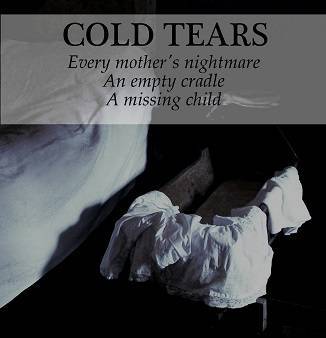
My favorite is to let the threat be to a family whose characters are sympathetic and well developed. And then make the key member of the family unit, the wife and mother, be the character so precious to the reader that the danger and suspense is palpable. Then again, I’m that most common of male stereotypes, the genteel chauvinist who thinks that a man’s role is to protect “the fairer sex.”

That does not mean that the woman has to be fragile and helpless. Indeed the strong and confident woman becomes that much more precious to male and female readers alike.


The fate of a loving couple is always a good hook. I found myself becoming fearful for the fate of Jill in Bonne Femme. It was not just the threat to this remarkably strong young woman, but also the threat to the all but stillborn love affair of my main characters.
Adding a baby so that we worry about the fate of the entire family is frightening and effective if handled carefully and tastefully.

My favorite is to let the threat be to a family whose characters are sympathetic and well developed. And then make the key member of the family unit, the wife and mother, be the character so precious to the reader that the danger and suspense is palpable. Then again, I’m that most common of male stereotypes, the genteel chauvinist who thinks that a man’s role is to protect “the fairer sex.”

That does not mean that the woman has to be fragile and helpless. Indeed the strong and confident woman becomes that much more precious to male and female readers alike.
Published on August 07, 2018 14:34
•
Tags:
female-characters, precious-characters, strong-females, suspense, tension, thrillers, writing
Musings and Mutterings
Posts about my reading, my writing, and thoughts I want to share. Drop in. Hear me out. And set me straight.
- A.R. Simmons's profile
- 59 followers



